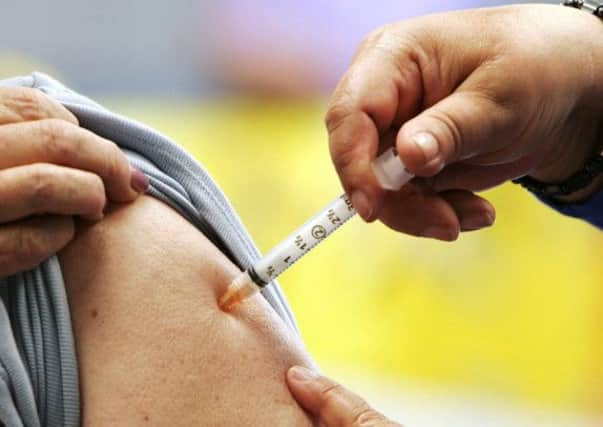Mystery surge in meningitis deaths


Health Protection Scotland (HPS) revealed that between January and September there had been 67 cases of the illnesses – collectively known as meningococcal disease – and five deaths, meaning a fatality rate of 7.5 per cent.
This compared to 60 cases and one death during the same period the previous year, with a fatality rate of 1.7 per cent.
Advertisement
Hide AdAdvertisement
Hide AdExperts said three of the deaths were reported in April to June, which was “an unusually high number of deaths” for that time of year when levels of meningococcal disease are generally at their lowest.
None of the cases is believed to be linked, but it was unclear why deaths had increased in 2013.
Overall, cases of meningococcal disease have dropped dramatically since the introduction of the MenC vaccine, which protects against meningitis and septicaemia caused by meningococcal group C bacteria, in 1999.
However, a vaccine has yet to be introduced for other strains.
Earlier this year, health campaigners criticised a decision by the UK’s Joint Committee on Vaccination and Immunisation not to recommend the roll out of a vaccine for meningitis B. The committee said there was not yet enough evidence to support its introduction.
The latest report from HPS revealed that four of the five deaths were among cases infected with group B meningococcal disease and one had an unknown group.
They said that the “microbiological profiles” of the four group B deaths were all different from each other so the cases were not believed to be linked.
Of all the cases reported in Scotland this year, the majority were in young children.
Advertisement
Hide AdAdvertisement
Hide AdAlmost half – 49.3 per cent – were in children under five, with 22.4 per cent in five to 24-year-olds and 28.4 per cent in the over-25s.
The majority, 37.1 per cent, had a diagnosis of meningitis, while 35.5 per cent had septicaemia and 27.4 per cent had both meningitis and septicaemia.
Dr Claire Cameron, strategic lead for meningococcal disease at HPS, said: “While cases have more than halved with the current immunisation programme, meningococcal disease can affect anyone of any age at any time.
“However, young children under the age of five are the group at most risk for meningitis and septicaemia, around half of all cases occurring in this age group.
“Vaccination remains the best way to prevent meningitis, but until we have vaccines available to prevent all types, you need to know the signs and symptoms to look out for and the action to take.”
The MenC vaccine is included in the range of vaccines given during childhood, with the first given at three months, followed by a booster between 12 and 13 months and an additional booster around 14 years of age. Uptake of the vaccination remains high in Scotland.
Dr Cameron said that while vaccination had been a “phenomenal success”, people should seek medical help if they saw possible symptoms of meningococcal disease, which include a rash, aversion to bright light, painful joints and limbs and a severe headache.